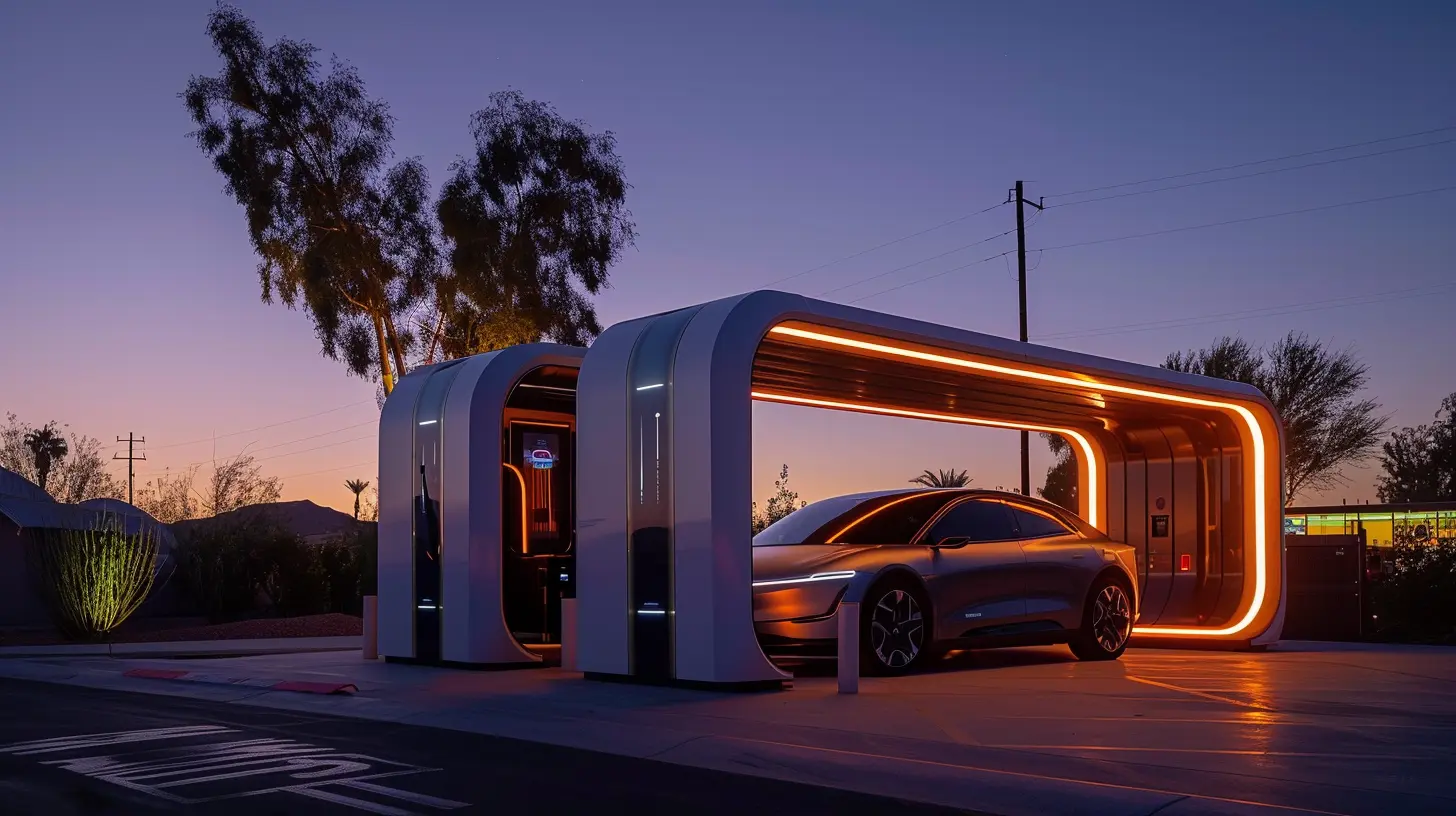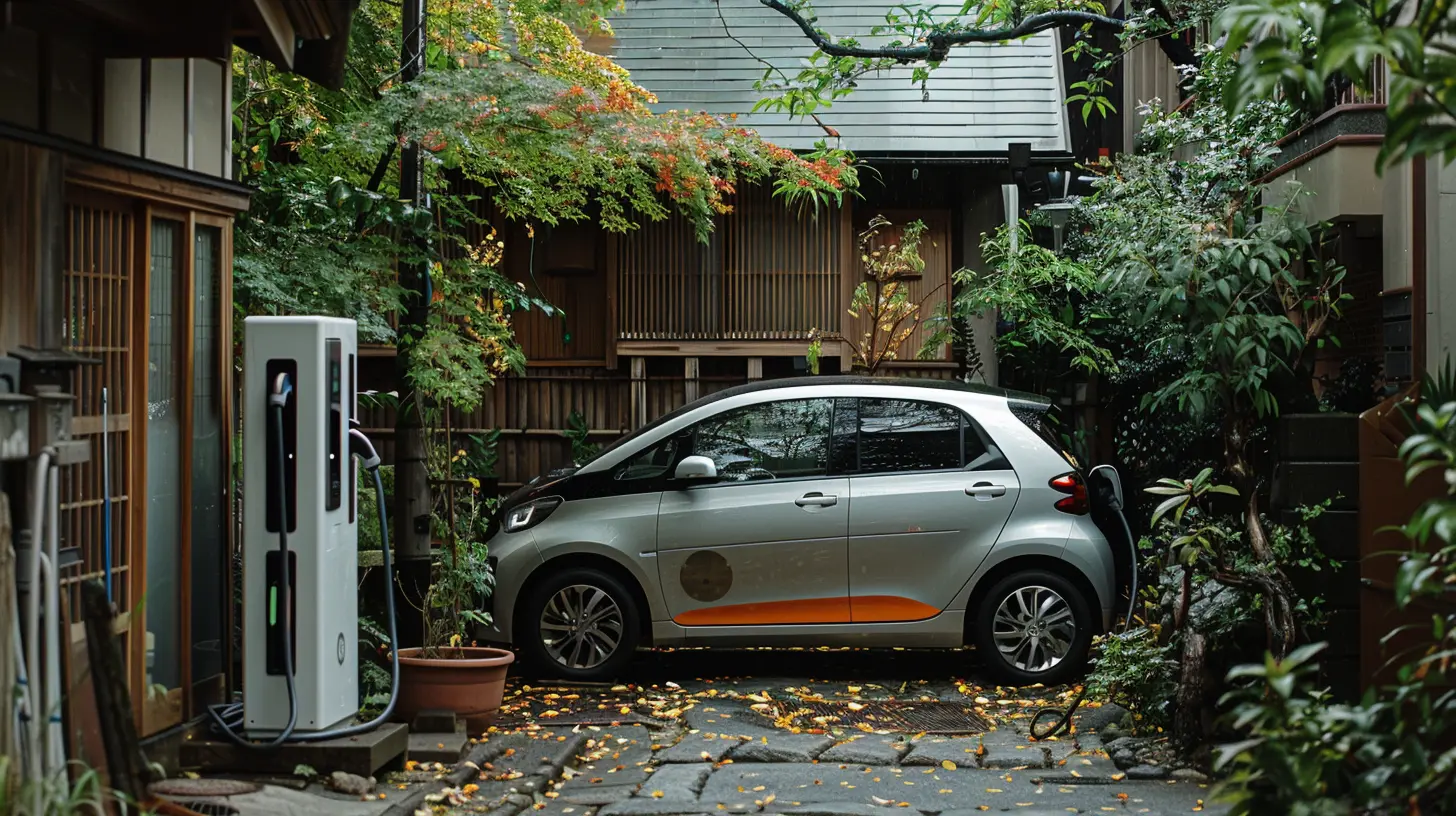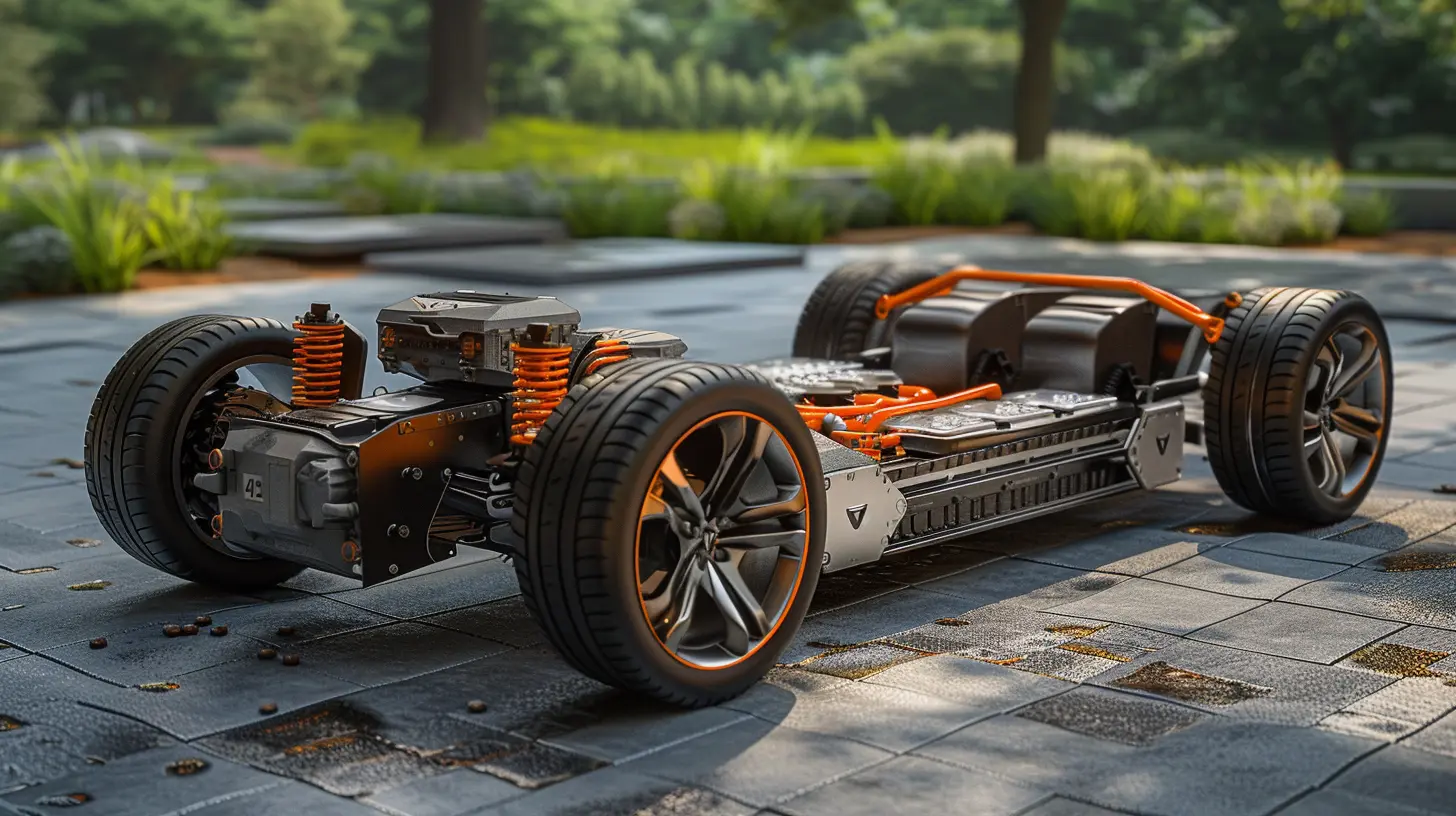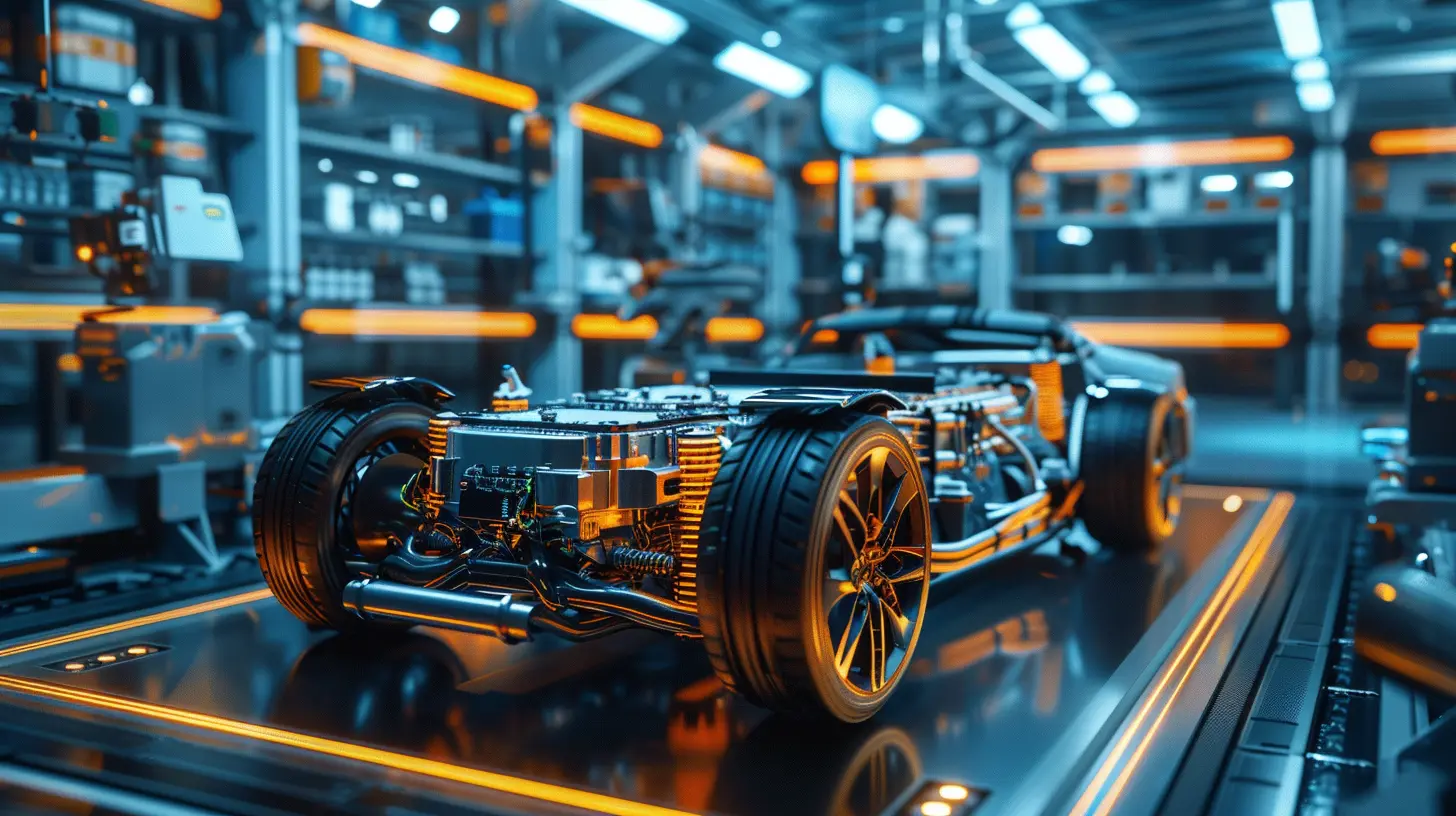How Battery Swapping Could Change Electric Vehicle Infrastructure
13 October 2025
Electric vehicles (EVs) are no longer the futuristic dream they once were. They’re here, they’re real, and they’re becoming more common every day. But even with all the excitement surrounding EVs, there’s still one big elephant in the room – charging. Let's face it: while charging infrastructure has improved leaps and bounds, it’s still not as fast or convenient as pulling into a gas station and filling up your tank in a few minutes.
Now, what if I told you there was a way to "fill up" your EV in less time than it takes to grab a coffee? Enter battery swapping – a concept that could change the game for electric vehicles and alter the very fabric of EV infrastructure.

What Exactly Is Battery Swapping?
Before we dive deep, let’s break down what battery swapping actually is. In a nutshell, battery swapping is the process of replacing a depleted EV battery with a fully charged one, rather than plugging the vehicle into a charging station and waiting for the battery to charge. Simple, right?Think of it like swapping out the batteries in your TV remote when they run low. Instead of waiting hours for your battery to recharge, you just swap it out and keep going. For EV owners, the appeal is obvious: no more waiting around for a charger to do its thing.
But while the concept sounds straightforward, the implications for the EV industry are profound.

How Battery Swapping Could Revolutionize EV Infrastructure
1. Faster "Refueling" Times
Hands down, one of the biggest advantages of battery swapping is speed. Most current electric car owners know the pain of waiting for their vehicle to charge. Even the fastest chargers can take anywhere from 20 minutes to an hour, depending on your vehicle and the charger type.With battery swapping, this problem could become a thing of the past. Swapping a battery could take as little as 3-5 minutes – comparable to the time it takes to fill up a gas tank.
Imagine pulling into a swapping station, having your depleted battery removed, and a fully charged one slotted in, all in the time it takes to grab a coffee. This could make EVs far more attractive to consumers who value convenience and speed.
2. Reduction in Charging Infrastructure Pressure
Right now, the expansion of EV charging infrastructure is a massive undertaking. Governments and private companies are racing to install charging stations at key locations to meet the growing demand. But let’s be real – it’s a slow process, and the current infrastructure is still lacking in many areas.Battery swapping could reduce the pressure on this infrastructure. Instead of requiring thousands of charging stations in every city, a smaller number of strategically placed swapping stations could satisfy demand. It could also alleviate the problem of limited charging spots, especially in urban areas where parking is scarce.
3. Less Battery Degradation
If you own an EV, you’ve probably heard about battery degradation. Over time, as you cycle through charges, your EV battery slowly loses its ability to hold a full charge, much like the battery in your smartphone. This can eventually lead to reduced range and performance.Battery swapping could potentially alleviate this issue. Instead of always using the same battery, swapping allows vehicles to cycle through different batteries, meaning no single battery is constantly being used and recharged. Moreover, the batteries can be maintained and monitored by professionals at swapping stations, ensuring they're always in tip-top shape. This could prolong the lifespan of individual batteries and enhance overall vehicle performance.
4. Lower Upfront Costs for EV Buyers
One of the biggest hurdles to EV adoption is the initial cost. While prices are dropping, EVs are still generally more expensive than their gasoline-powered counterparts. A big chunk of that cost comes from the battery itself – often one of the most expensive components in an EV.Battery swapping could change this dynamic. In a swapping model, the ownership of the battery could remain with the service provider rather than the vehicle owner. This means that when you buy an EV, you're essentially purchasing everything except the battery. As a result, the upfront cost of EVs could drop significantly, making them more accessible to a broader audience.
This model would be similar to how you might lease a car or rent a propane tank for a barbecue. You own the car, but you lease the battery, swapping it out whenever needed. It’s a win-win for both the consumer and the industry.
5. Flexibility in Battery Technology
Let’s say a breakthrough in battery technology happens tomorrow, and a new type of battery comes out that charges faster, lasts longer, and is more environmentally friendly. If you own an EV today, you’re stuck with your current battery unless you shell out for an upgrade.But with battery swapping, there's inherent flexibility. Swapping stations could upgrade their battery offerings as new technology becomes available. This would allow EV owners to benefit from the latest advancements without needing to buy a new vehicle. It’s like upgrading to the latest smartphone without having to change your entire mobile plan or provider.
6. Encouraging Sustainable Energy Use
One challenge with EVs is ensuring that the electricity used to charge them is clean and renewable. With battery swapping, stations could charge large numbers of batteries during off-peak hours when renewable energy sources like solar or wind are more readily available. Batteries could be charged when there’s excess renewable energy, and then swapped out when needed.By centralizing battery charging, swapping stations could play a key role in balancing the grid and ensuring that more EVs are powered by clean energy. This could further reduce the environmental impact of electric vehicles and help in the transition to a greener future.

The Challenges Standing in the Way
Of course, it’s not all smooth sailing. While the idea of battery swapping sounds fantastic, there are still a few significant hurdles that need to be overcome before it can become mainstream.1. Standardization
One of the biggest challenges with battery swapping is the lack of standardization. Different EV manufacturers use different battery sizes, shapes, and technologies, which makes it difficult to create a one-size-fits-all swapping solution.For battery swapping to work on a large scale, there needs to be some level of standardization across the industry. This could mean cooperation between manufacturers to create universal battery designs or retrofitting existing vehicles with swappable battery technology.
2. Infrastructure Investment
Building a network of battery swapping stations would require significant investment. While companies like NIO in China are already experimenting with swapping stations, expanding this model globally would require billions of dollars in infrastructure development.It’s not just about building the stations either – maintaining a large inventory of charged batteries and ensuring they’re always ready for swapping is a logistical challenge that would need to be addressed.
3. Consumer Acceptance
Finally, there’s the issue of consumer acceptance. People are creatures of habit, and many EV owners may be hesitant to adopt a new system, especially if they’re already familiar with traditional charging. Additionally, some consumers may prefer to own their battery outright rather than relying on a swapping system.Convincing the general public that swapping is the way forward will take time and education – but as we’ve seen with EVs themselves, it’s certainly possible.

The Future of Battery Swapping
So, will battery swapping become the dominant model for EVs? It’s hard to say for sure. While it offers undeniable benefits – faster "refueling," reduced upfront costs, and less strain on charging infrastructure – there are still several hurdles to overcome.That said, battery swapping has already proven successful in certain markets, particularly in China, where companies like NIO are leading the charge. As the EV market continues to grow and evolve, it’s likely that we’ll see more experimentation with this model in other parts of the world.
In the end, battery swapping may not entirely replace traditional charging, but it could become an essential part of the EV ecosystem, offering drivers more flexibility and convenience. It's like having both a microwave and an oven in your kitchen – sometimes you need one, sometimes the other, but together they make life a whole lot easier.
Conclusion
Battery swapping could be the key to making electric vehicles even more convenient and accessible. By reducing charging times, lowering costs, and offering flexibility, this innovative solution has the potential to revolutionize the EV landscape. While there are still challenges to overcome, the future of battery swapping looks bright, and it could play a crucial role in shaping the future of electric vehicle infrastructure.all images in this post were generated using AI tools
Category:
Battery TechnologyAuthor:

John Peterson
Discussion
rate this article
1 comments
Harper Estes
Battery swapping: finally a fast lane for lazy EV drivers!
October 20, 2025 at 12:22 PM

John Peterson
Thank you for your comment! Battery swapping indeed offers a convenient solution for quick recharges, making EVs more accessible for all drivers.


